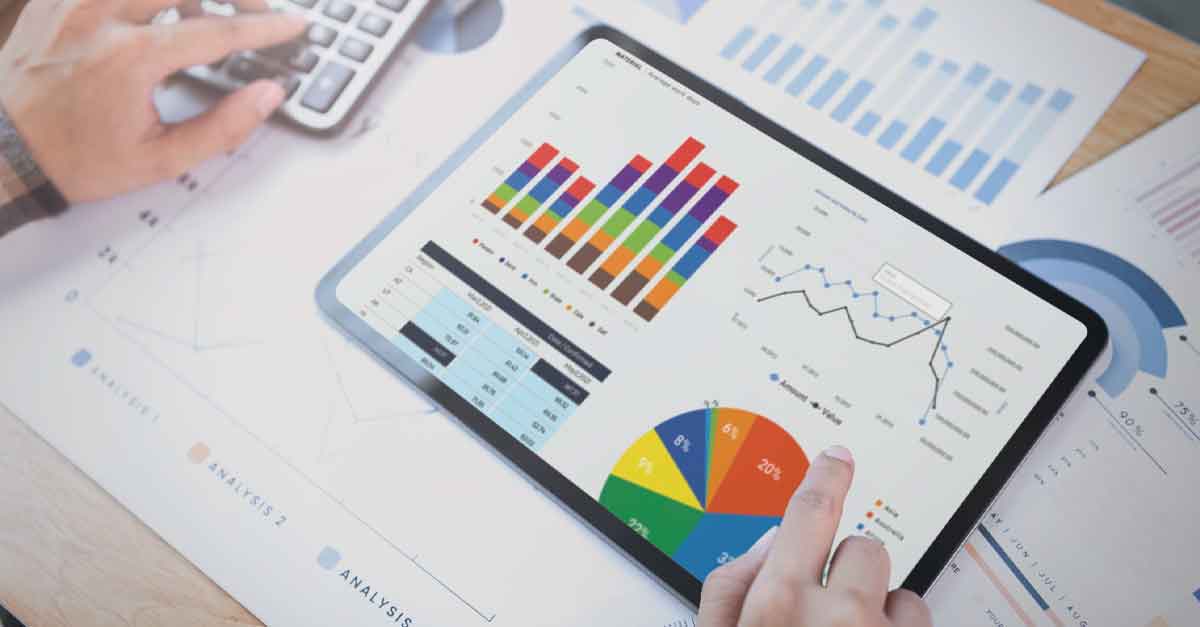eCommerce businesses can’t expect to achieve results or know the key improvement areas if they don’t have much insight into the present performance. However, learning from previous efforts and testing ideas for a better future is always good practice. For that, it is crucial to have relevant data at your disposal. The answer to finding data is simple – eCommerce analytics.
Analytics allows businesses to collate facts, figures, and previous data, and drive forecasting to make better, informed business decisions. According to Gartner, about 3 out of 4 marketing leaders base decisions on analytics, and rightly so.
When it comes to eCommerce analytics, there are a number of ways in which businesses can benefit from collecting and storing data to make better decisions, conduct better market research, and improve customer satisfaction.
This article serves as a complete guide on eCommerce analytics. So, without further ado, let’s get started.
What is eCommerce Analytics?
Discovering, interpreting, and communicating data patterns of eCommerce business is known as eCommerce analytics. It includes analyzing and reporting data about website traffic, customer behavior, customer journeys, transactions, conversions, etc.
Today, many marketers use analytics to show the ROI for campaigns, make better marketing decisions, and help centralize and manage data. eCommerce analytics serves as the base for businesses to gain insight into the effectiveness of their online store and comprehend why visitors behave in certain ways on the site.
Uses of eCommerce analytics
Now that you know what eCommerce analytics is, here are some of the reasons why an eCommerce B2B or B2C business should make use of analytics right away:
1. Understand Marketing Data
Analytics helps keep all the data in one place. You can use campaigns, social ads, and email marketing data, view real-time statistics, and know what is working and what is not. It will help you measure marketing performance, formulate growth strategies, and decide better about where to invest money.
2. Uncover Trends
eCommerce analytics helps us to treat the data as an interconnected system. Having all the data elements together makes it easy to find patterns and trends. This way, marketers can discern the top customer segments based on transactions, understand their buying behavior, and use it to predict future trends or replicate success.
Marketers can also minutely determine who interacted with the content— if they clicked, bought, or downloaded something. With this data, they can create content that resonates with the customers, generates more engagement, increases profits, and provides the business with a competitive edge.
Metrics:
Here are some of the metrics that eCommerce analytics platforms can lay out in no time:
- The number of visitors to the website via referrals and other marketing campaigns
- The activity and actions of visitors on the website over a specific period
- Most visited pages during the shopping season
- What device do people use to visit the website
- The location of the visitors
3. Optimize Pricing
Did you know that appropriate price management can help increase a company’s margin by 2% to 7% in a year, yielding an ROI between 200% and 350%?
eCommerce analytics help businesses understand how pricing affects the purchasing decision of customers. As such, they can discover the best price point customers will likely pay for a product. Businesses can also predict which products are likely to be price sensitive and adjust the prices accordingly.
Best Analytics Practices to Improve Headless Strategies
Headless commerce strategies have been on a steady rise – owing to the flexibility of operations facilitated by headless architecture.
In essence, the headless architecture decouples the front end and the back end of an online store. So, suppose the front end (built using JavaScript and the likes) is responsible for displaying items and allowing users to checkout, in that case, the back end (built using Magento and the likes) can take care of inventory, payment processing, and business logic. Both front-end and back-end are connected via APIs, thus, providing businesses with the benefit of tweaking them independently as and when required.
In a headless commerce setup, eCommerce analytics is immensely viable. For instance, the performance of the front-end can be tracked and evaluated based on different themes like the intuitiveness of the front-end interface in engaging users, the clarity of the buying journey, and how front-end accommodates that to drive conversions. This way, businesses can optimize the design of the front-end without affecting the operations of the back-end — all the while enhancing the overall business performance.
Top 3 eCommerce Analytics Practices
To that end, here are some of the best eCommerce analytics practices that can drive headless strategies:
• Gather All Your Analytics Data Across All Platforms
You must organize and bring all the data together. For that, here are some of the most important business facets you need to organize:
- Your eCommerce store,
- Email providers,
- Customer relationship platforms,
- Google Analytics,
- Google Ads, and
- Social media ads.
• Analyze the Data Correctly and Try to Join the Dots
Once all the data is in one place, you must visualize the data patterns to get a clear picture of your user’s behavior and find the areas of improvement.
• Keep Tracking Your Site’s Shopping Behavior Flow
Focus on the sessions with transactions, checkout, etc. If you find a sudden drop at any point in time, this indicates a problem in your checkout process or the speed of your website. Mostly, the issues point toward irregularities in information architecture. Because the architecture under consideration is headless, these inconsistencies can be addressed without any back-end hassle.
Major Role of Analytics in Today’s Omnichannel World
Here is how eCommerce analytics plays a significant role in the omnichannel world:
- Businesses can easily manage product data and inventory from the warehouse to customers.
- Effective analytics in place helps businesses to detect fraud and avoid them.
- Analytics-driven recommender systems or engines serve as a blueprint for customers to navigate the store virtually.
- Analytics helps to analyze the funnel of a new prospective customer and maximize the chances of conversion.
- eCommerce analytics also helps to identify how a product is being searched, what decides the rank ordering of the product, the best landing page for the customers, and much more.
Conclusion
The eCommerce landscape is growing, and analytics will equip businesses better to enhance user experience and realize the best possible outcomes from their eCommerce platforms.
How about implementing an eCommerce analytics strategy for your store? Book a consultation with us today!








